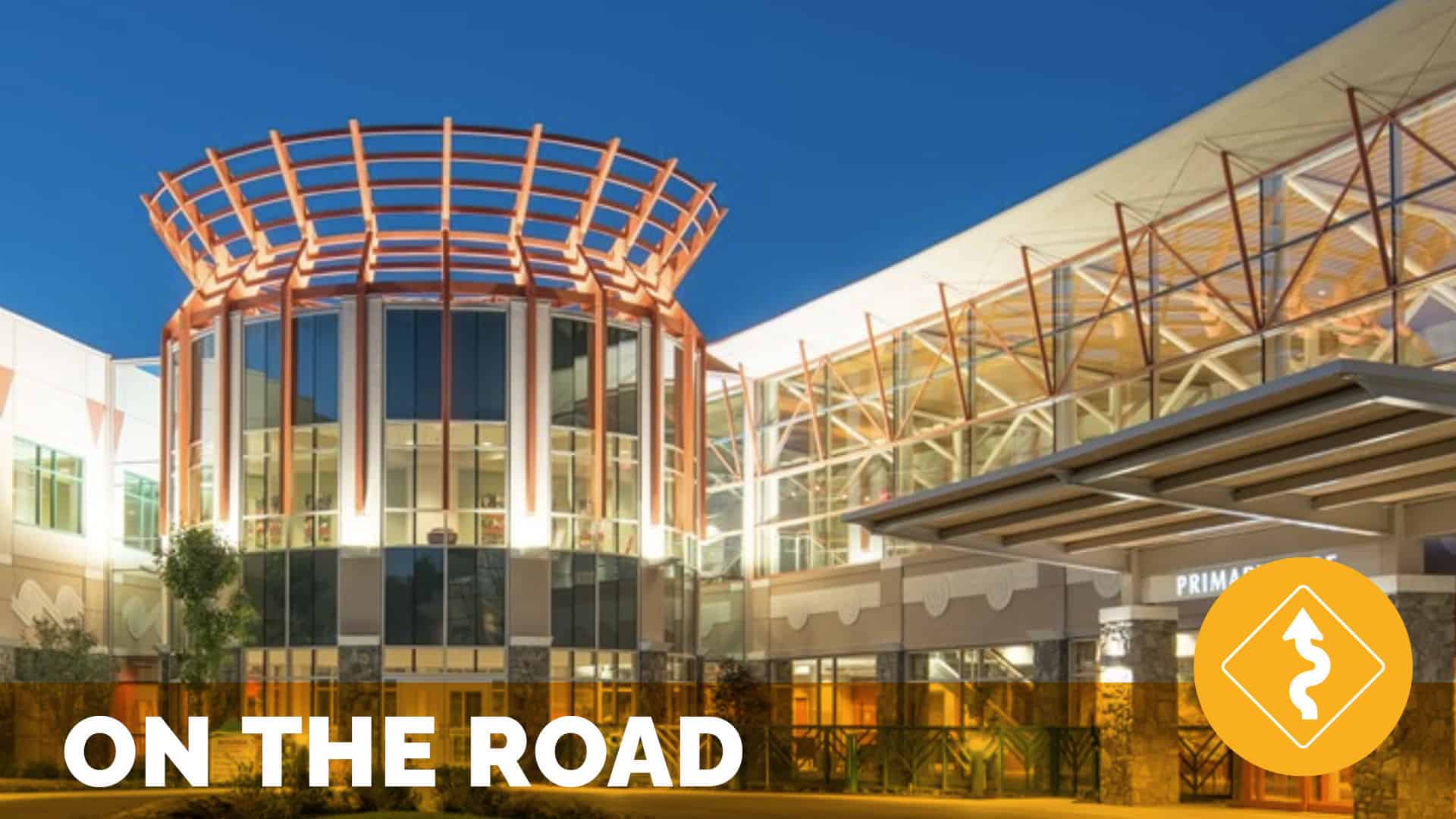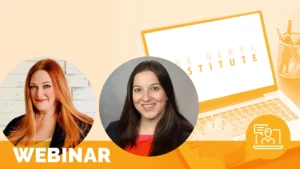Redefining Healing in Healthcare

On the Road with Cherokee Indian Hospital – March 2018
by Tiffany Christensen
In western medicine, we define healing as “the act or process of curing or of restoring to health” and we typically envision that as physical healing. We seek to take away fever, manage blood sugar and reduce blood pressure. Obviously, these are only some examples of the outcomes people might hope to achieve when visiting a clinic, hospital or Emergency Department.
But what if the healing being sought was not physical? What if the ailments suffered resulted from a deep psychological, spiritual and cultural weight? What if, along with those burdens, came barriers to trusting those who want to provide healthcare? How then, would we seek care at a clinic, hospital or ER? Would we even bother to seek care at all?
This is just a small window into the questions that must be explored when working at Cherokee Indian Hospital in Cherokee, North Carolina. Nestled in the Great Smoky Mountains of Western North Carolina, this 20-bed Hospital faces what the Cherokee people call “Rattlesnake Mountain.” In addition to in-patient and emergency services, the organization provides a dental clinic, eye center, physical therapy, complimentary Medicine (massage, chiropractic services, acupuncture), behavioral health services and wound care.
While these services are impressive, they are not highly unusual for a Hospital. In order to understand the true depth and beauty of healthcare in this facility, one must be willing to journey into the past and be open to redefining healing by discovering a new way of approaching healthcare.
A Painful History
Meeting with the Cherokee Indian Hospital Leadership Team, passionately headed by Casey Cooper, CEO, is a different experience than most leadership team meetings. The vast majority of conversation was devoted to understanding the long and painful history of the population this hospital primarily serves: the Eastern Band of Cherokee Indians.
The history of the Cherokee people is one with many twists and turns. This is a tribe of people who are highly progressive, intellectual, innovative and are known for self-deprecating humor. Theirs is the story of a people who once were numbered at approximately 50,000 and lived in nine of the southern states across 250,000 square miles. In the early 1700’s, that number dropped to 9,000 due to both the smallpox brought by Europeans and enslaved Africans and the scorched earth campaigns. Because of this devastation, heading into the 1800’s, the sentiment among the Eastern Band of Cherokee Indians was that they had “no past and no future” because so many of their elders and children had died.
A resilient culture, the Eastern Band of Cherokee Indians rebuilt itself and, during the 1800’s, they had a written language, printed newspapers, an established constitution, had translated the Bible, built railways and established both a government and seminary school. Despite these advancements, during this same time period, the Cherokee people were met with 36 different treaties that forced their removal from the land they had settled; deeply impacting not only where but HOW they could live. The following are a sample of the painful outcomes of these treaties:
In order to hold on to some of the land the Cherokee people deemed sacred, they had to agree to give up citizenship and therefore give up the protection that came with that citizenship.
“The Indian Adoption Project” became a practice of removing Cherokee children from their homes and families because “white men know better” and these children were carried off in baskets with no recourse for the Cherokee people to protest or retrieve their babies.
Cherokee boarding schools were created and actively worked to stop Cherokee children from speaking in their native tongue and strip them of their cultural identity.
In this On the Road, you will see that a multi-dimensional approach has been taken to serve the Cherokee people and help them heal from a traumatic history. What is perhaps most innovative and necessary to understand is the shift in mindset from seeing healthcare through a traditional lens. The population served by Cherokee Indian Hospital has some staggering data related to health disparities:
- Alcoholism: 514% higher than average US population
- Diabetes: 177% higher than average US population
- Suicide: 92% higher than average US population
Looking at this data from a traditional healthcare lens, responsibility for wellness falls on the person suffering from the problem and the healthcare professional treating the problem. Cherokee Indian Hospital takes a dramatically different approach. In this model of care, these illnesses are viewed as a reflection of deep historical trauma, not something that can be helped with simple symptom-management. For this reason, everything that is done to care for patients and families within this organization is rooted in supporting them in healing first from trauma and then from the illness believed to be caused by that trauma. Cooper states, “If operational efficiencies collide with Patient Experience, efficiency loses.”
Setting the Stage for Healing
In addition to the broader history of the Cherokee people, Cherokee Indian Hospital also acknowledges that western medicine itself – including the Cherokee Indian Hospital specifically – is a source of historical trauma for the Cherokee people. Because of the inter-generational narrative that goes with this health system, it was clear to the leadership that the foundation of providing healthcare in this community had to be rooted in trust.
In order to better understand how trust could be built, the leadership turned to the Elders of the Cherokee Tribe for help with the organization’s Guiding Principles. The Elders engaged in this process were both fluent in Cherokee language and the core values of the Cherokee people themselves.
The following four guiding principles are the result of this engagement and are profoundly personal to the community. These guiding principles are proudly displayed on the hospital’s website:
Guiding Principle One: U wa shv u da nv te lv: (oo wa shuh oo da nuh tay luh)
“The one who helps you from the heart”
Cherokees have been mislead and mistreated over the centuries by opportunist disguised as well-meaning subject matter experts. For this reason, to be effective in this community requires genuine, evident commitment to the best interest of the community.
“This community doesn’t care what you know until it knows you care”
Guiding Principle Two: To hi (toe hee)
“A state of peace and balance”
Cherokee believe that all things endeavor to achieve this ultimate state of peace where all things are in balance and as they should be. CIHA believes “to hi” can only be achieved through healthy relationships and is fundamental to living healthy lives.
Guiding Principle Three: Ni hi tsa tse li (nee hee zah zay lee or nee hee ja jay lee)
“it belongs to you”
Cherokee, like most Native Americans, enjoy the first pre-purchased healthcare in this country. Healthcare was purchased by ancestors through treaties with the United States, as recompense for the atrocities that resulted from horrific “Indian Policy” in this country. CIHA believes that all health care services belong to the people and CIHA is a steward of their inheritance charged with safe guarding it and providing it to them when and how they need it.
Guiding Principle Four: di qwa tse li i yu s di (dee gwa shay lee ee you sdee)
“Like family to me” “He, she, they, are like my own family”
CIHA is committed to being the healthcare partner of choice for this community enjoying the relationships found in healthy families.
These Guiding Principles are a reflection of the unique nature of Cherokee Indian Hospital’s approach to addressing patient experience. The leaders, staff and providers are deeply knowledgeable and humbled by the details of the Eastern Band of Cherokee Indians history. They describe this history as “government sponsored forced genocide” and embrace the trauma the Eastern Band of Cherokee Indians has endured as, not just a history of a people, but a trauma that persists today. For this reason, at Cherokee Indian Hospital, the question at the root of it all is not “What is the matter with you?” but rather “What happened to you and how can we help fix it?”
Embedding the Values into the Culture
Once the Guiding Principles were established, leadership began to look at ways to embed those core beliefs into the culture of those who serve the Cherokee population. It became clear that the next step was to design a Cherokee Indian Hospital Employee Training. Due to the community’s background and the focus on addressing trauma, the training that resulted is a full three-day interactive class called “The Right Way Experience” du yu go dv .
While the concept of orienting new employees to the core values of an organization is not unique, the components of the Cherokee Indian Hospital training are highly innovative and customized. The foundation of the training includes methods for cultivating compassion/empathy for the self so that one may be better equipped to cultivate compassion/empathy for those served.
As a companion to Guiding Principle One—U wa shv u da nv te lv, “The one who helps you from the heart”–trainees are provided concrete communication tools for, not only effective information sharing, but deep listening. One exercise used to develop better listening skills is based in positive inquiry and involves trainees to sit in a circle, share a personal story, listen to other stories and respond to the stories told in the spirit of learning with compassion.
A primary component of this training was built to ensure new employees are well-informed about the traumatic history of the Eastern Band of Cherokee Indians as well as have a working knowledge of how the hospital’s systems were designed to help those suffering from that trauma. This foundation ensures all employees within the organization are ready to do what is required to participate in the healing process for their community.
Co-Designing a Healing Environment
In October of 2015, a new building was unveiled with more than 700 community members who attended the ribbon cutting and pre-opening events. There were more than 1,000 community members that attended the events and participated in tours of the facility as it was being built. The building is not only a proud achievement because it was funded despite lack of government support, but because it is a reflection of the deep commitment Cherokee Indian Hospital has to healing a community.
Before the building was designed and erected, 30 Community meetings were held in order to co-design this environment. The question posed to illicit the Tribe Member’s feedback? “We’re building a new hospital; what hassles should we eliminate?”
Among the many understandings gained in these community meetings, some of the primary messages that emerged were:
- Please provide a flat parking lot for those who have trouble with mobility.
- Please provide a drive-up pharmacy.
- Healing must be facilitated by the space. The hospital can’t compete with the natural environment.
These practical items were honored and the building now has a flat parking lot and a drive-up pharmacy. Creating a healing environment in which both the beliefs of the Cherokee people and the healing power of nature were the focal point is largely what makes this building so extraordinary to behold.
Pulling up to the building, one immediately begins to see unusual details. Carved on the sides of the building are wind symbols and flowing water symbols – two of the four most powerful forces in nature and ones that embody movement and transformation. The glass on the exterior of the building has been intentionally glazed so that it reflects the mountains surrounding the building. Perhaps most eye-catching is the atrium section located in the middle of the building. This architectural shape was designed to mimic the basket design of Maddie Wildcatt, a tribe member who currently resides in Cherokee, NC, and is well-known for her beautiful baskets. The actual basket is located in the main lobby.
Entering the main doors of the hospital, one is greeted by a bold “water spider” in the floor tile; the first of many artistic representations of Cherokee Legend. Walking the main hall of the building, the floor is an artistic depiction of flowing water or a stream. Inside this stream is a series of graphic creatures and elements of the earth that guide the pathway. Some of the Cherokee Legends one encounters are the “Hell-Bender Water Dog,” the Salamander and Water Beetle. Pictured here is “fishware,” a likeness of a stone structure assembled by hand to catch fish. The purpose of these and other eye-catching images is to remind those walking these halls of the resiliency of the Cherokee people.
Signs across the hospital were carefully written after a long and laborious process of having the Cherokee Elders translate English medical terminology into Cherokee. For example, the beautiful hospice wing that provides two large rooms to accommodate patients and large families sitting at the bedside of their dying loved one bears the sign “over yonder.” The Emergency Department sign translates simply as “To get better in a hurry.”
The attention to creating a healing environment is not only found in what one sees walking through the halls or sitting in waiting areas, but also by what one does not see. Effort was made to ensure stress-inducing sites are taken behind closed doors. A patient waiting in one of the clinic waiting areas, for example, will not see IV poles, sirens or EMS trucks. These anchors of stress have been strategically routed to be “off stage” as a way of reducing “wait stress.” In addition, great effort has been made to ensure queuing stations in all areas are not isolated, access to all clinical areas has been made equal-walking distance from an exterior door and nature’s views and/or elements have been infused all over the hospital to inspire strength and healing.
Tremendous effort was taken to bring nature into the space, pay homage to the culture and legends of the Cherokee people and reduce stress as much as possible. The level of thoughtfulness, partnership and dedication it took to co-design the space is both obvious and moving to anyone walking through the hallways of this organization.
Clinical Approach to Healing Trauma of the Past
The Leadership of Cherokee Indian Hospital attributes much of their wisdom to studying the work done by the South Central Foundation in Anchorage Alaska. Specifically, the Alaska model helped to guide the redesign of their Primary Care delivery. At the foundation of this philosophy is the understanding that, “when acuity is high, system control is high and when acuity is low, patient/family control is high.” Building off of this understanding comes the recognition that relationship-based care is the key to making both acute and non-acute care interactions successful for everyone.
The process of building trust is one that will span years and happen across generations. In part, this is due to the fact that Western Medicine is not fully trusted or understood by some members of the Cherokee Tribe. Most Cherokee people come from a family in which they “got doctored” at home unless or until the illness became very serious. Traditional therapies such as yellow root for fevers and squirrel brains for tooth aches are still a part of the Cherokee culture today.
Due to some of the permeating narratives among tribe members, patients who do get sick enough to seek western medical treatment may not choose to go to Cherokee Indian Hospital but, rather, seek care at a hospital in a neighboring community. This breakdown in trust has been a primary focus for both leadership and the Patient/Family Advisors working at Cherokee Indian Hospital. Efforts to co-design care and the new hospital’s architecture have served to build new bridges and the efforts have paid off. Today, there is a significant increase in the utilization of the hospital/clinics/ER.
In an effort to provide and expand excellent clinical care, the organization has added services specifically designed to address trauma. Among these are acupuncture, healing touch and massage. Soon mindfulness training will be added to this impressive list of approaches to healing both body, mind and spirit.
A Place of Great Inspiration
The complexity of history, emotion and desire to heal a community’s traumatic past at Cherokee Indian Hospital is a story bigger than one that can be fully captured in one On the Road. Visiting this organization is truly a life-changing experience. Walking the halls with Cooper, one is met with warm smiles and big greetings. Talking with the Patient and Family Advisors, one sees people working to speak on behalf of many, even if they are too disenfranchised to join the conversation. This is not a utopia, there is much more healing needed, but it is a place of great inspiration. In a time where patient experience can be seen as a box to check or a desire to improve surveys, this Western North Carolina organization shines as a model for the true heart of Patient Experience: to reduce suffering in a loving and strategic way. The Beryl Institute extends sincere gratitude to this organization for its bold approach and ability to set an example for patient experience efforts across the globe.
Special thanks again to Mr. Casey Cooper, Sonya Wachacha, Maggie Jackson, the wonderful Patient and Family Advisors and Cherokee Indian Hospital for hosting us and sharing their unique journey to healing and improving the patient experience.
Related content
-
 Culture & Leadership
Culture & LeadershipIt’s More Than Just a Mattress: Multidisciplinary Process Improvement for the Disabled Patient Population
This case study sheds light on how small process changes can make a big difference in creating a positive patient experience without the need for added resources. Tampa General Hospital shares improvement techniques and the investigation methodology used by its multidisciplinary teams to influence an important process change impacting disabled patients.
Learn more -
 Culture & Leadership | Staff & Provider Engagement
Culture & Leadership | Staff & Provider EngagementAligning Volunteer Programs with the Changing Landscape of Healthcare
Volunteerism in healthcare is an ever-changing landscape that requires assessment and realignment to ensure programs and needs within the health system remain relevant. In this session, participants will learn how to proactively participate in health system goals, the process for assessing and tracking their program efficacy, and how to align volunteer impact directly to the
Learn more -
 Culture & Leadership | Staff & Provider Engagement
Culture & Leadership | Staff & Provider EngagementLeading Healthcare & PX Teams with Clarity, Confidence and Courage
A healthy, empowering, and inclusive work culture inspires trust and engagement, making it easier to recruit and retain top talent. Yet, it’s harder than ever in this constantly changing world of burnout and overwhelm. In this webinar, healthcare leaders will learn to maximize human potential with a focus on well-being, leveraging the Culture CARES® model
Learn more
